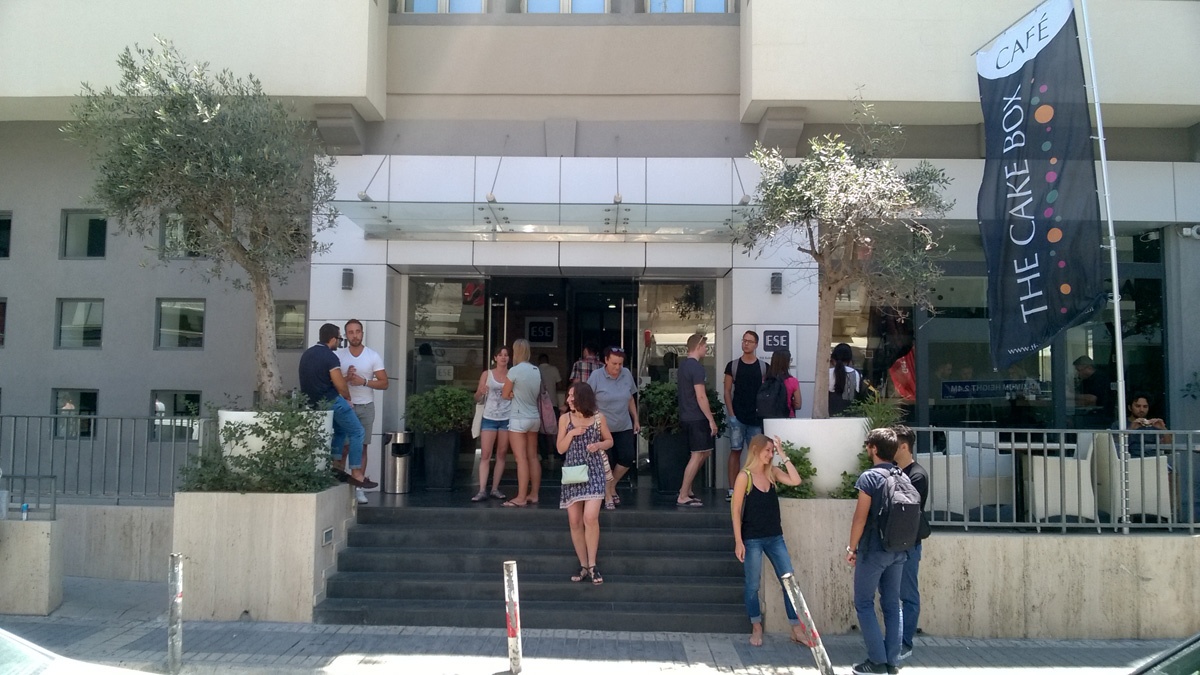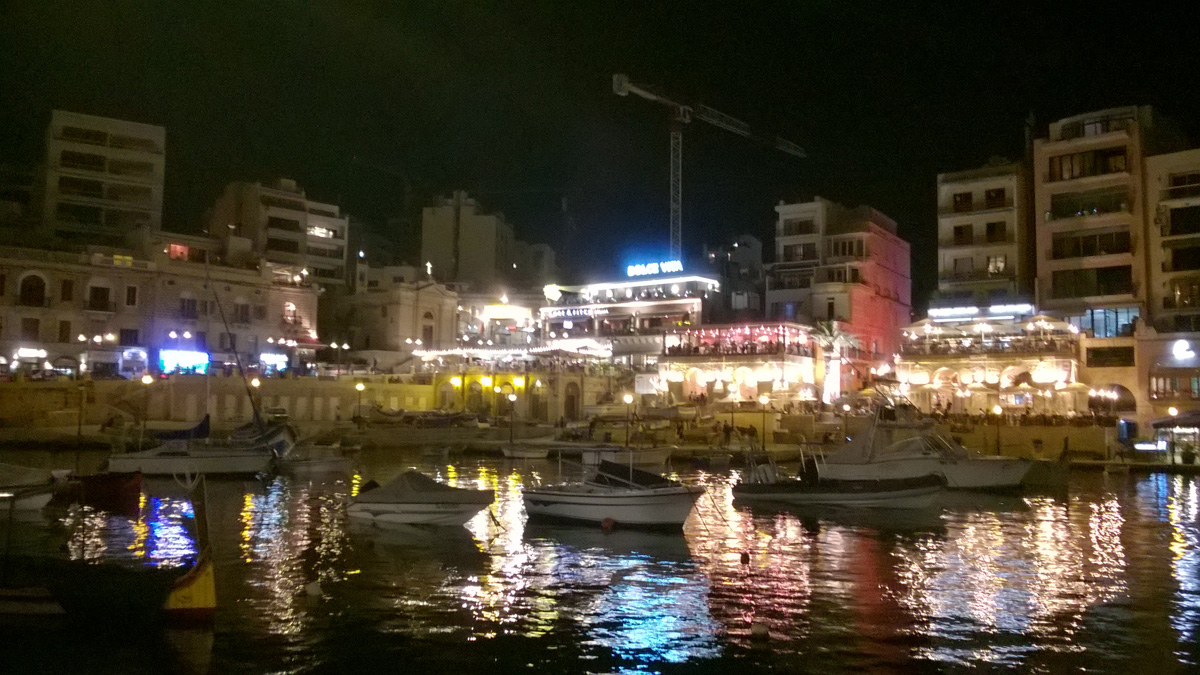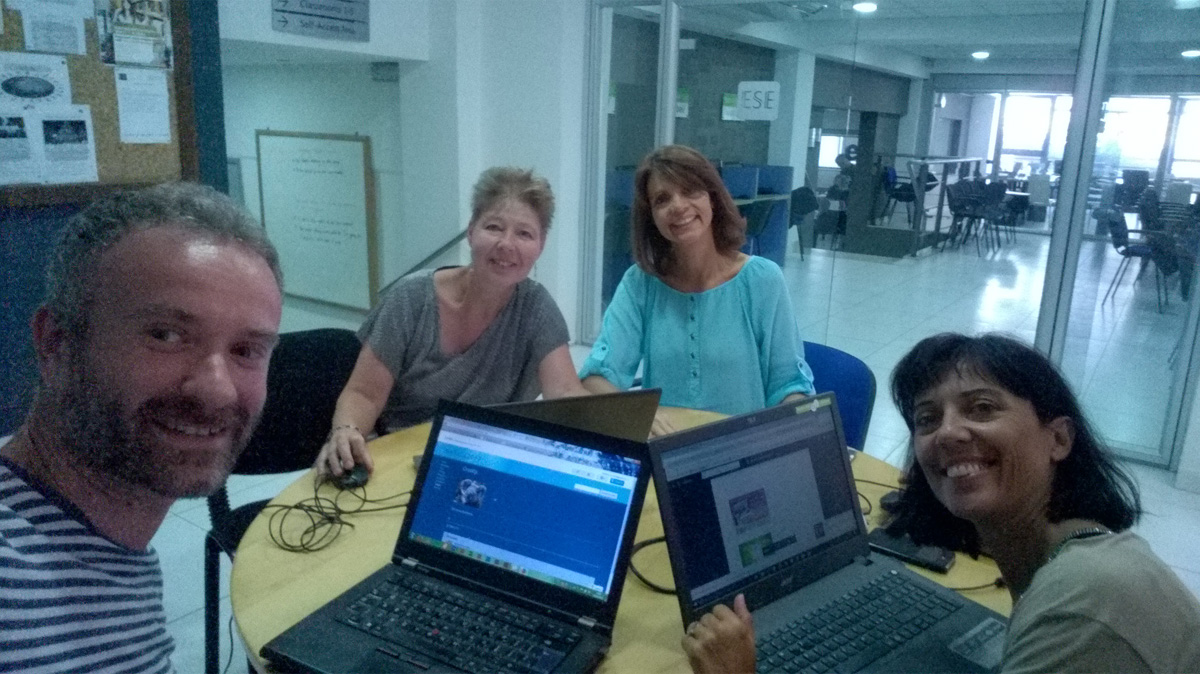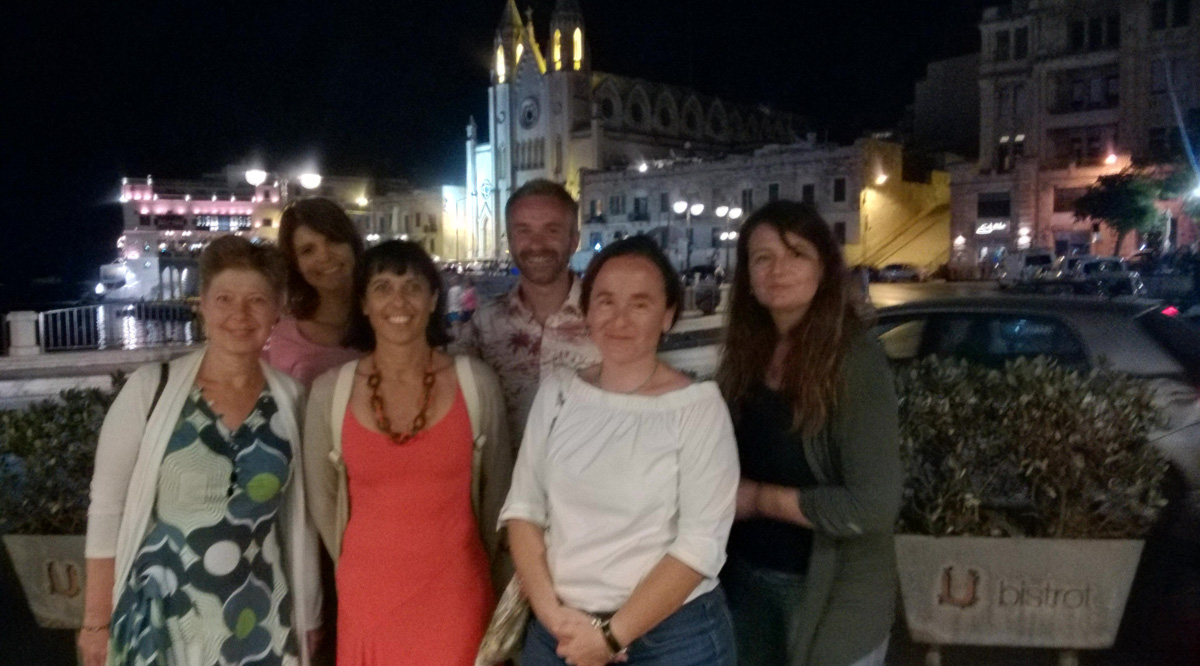CLIL - Online tools for Teachers working with CLIL
St. Julian - Malta - 19/06/2017 - Day one.
My experience in Malta is about CLIL, but mostly, is concerned about the use of technologyc tools to improve the effectiveness of lessons using CLIL.
The course is structured in a full week of lessons from 9 o' clock since 14:30. I'm following the lessons in a group of 8 european teachers from Italy, Olland, Ireland, Czech Republic and Spain of every order and grade, from elementary schools to university.
The host structure is ETI Malta http://www.etimalta.com/ a training centre located within the ESE (European School of English) building situated in St. Julian’s.
I have to say that my first impression of the centre is really good, it's everything good looking and well organized.

Here it is a nice look from the outside of ETI Malta

Another look from the outside

Students are coming

And now a look inside

The first lesson begins!
The first lesson starts... with the meaning of Clil! Despite the primary objective of the course is about the use of IT tecnologies, it's important, first of all, to clarify what Clil is. Clil is about to reach two aims in a single shot: content and language; clil is about CALP, the language of study, and not BICS, the base language; Clil is about saving time while teaching, it's improving L2, it's about to reach the 5Cs (content, communication, competence, cognition, community)...and many many more :) To give you an idea, here there are two interesting videos about the concept of Clil:
https://www.youtube.com/watch?v=-Czdg8-6mJA
https://www.youtube.com/watch?v=uIRZWn7-x2Y
We learned how to use Multidict: http://multidict.net/ and Wordlink: http://multidict.net/wordlink/. Multidict and Wordlink are two useful tools that will process a webpage and link it to online dictionaries wich will make easier to read complicated articles in a foreign language.
Then we started to learn about the Webquest. A webquest is an inquiry-oriented activity in which some or all of the information that students interact with, comes from resources on the internet. Ideally, a webquest is a scaled down version of things that adults do as citizens or workers. It requires higher level of thinking, not simply summarising. This includes analysis, problem-solving, creativity and judgment. A webquest usually is builded in 6 different steps: introduction, task, process, information sources, evaluation, conclusion. There are a lot of webquest already builded in this site: http://webquest.org/
Why to use a webquest?
- It increases student motivation
- Develops higher order thinking skills
- Encourages a cooperative learning process
After a lot of training using multidict, wordlink and researches on webquest.org, analysis of the Bloom's taxonomy, the first lesson is finished. I have to say that in one day i really learned a lot...now is time to discover Malta!

Here we are!

What a nice looking view of Balluta bay

There are a lot of nice cafè around the bay

Balluta bay by day

...and by night

:)
My first day is almost finished. I have to say that Malta is really a good place for learning.
St. Julian - Malta - 20/06/2017 - Day two.
Building a CLILstore Unit
Clilstore is an enormous container of CLIL lessons shared around the world. You can access either as a student or a teacher. As a student, you can find useful lessons about any kind of topic, in any type of language level, with the plus of the transcription of every single word linked to a choice of online dictionaries in your own language. As a teacher, you can create, store and organize multimedia wordlinked learning units for use by students.
If you want to create a unit, first of all you must to register in Clilstore as an “Author”. Before you can create a lesson, you will need to have your content prepared. This will be entered in as a text – so it can be something that you have created or something from an online source (be careful: all online sources must be referenced in order to avoid copyright violations).
Now that you have your materials you can create a unit, give to your lesson a title and finally add content to the lesson. The text that you can put in a Unit has no maximum length, but it must be at least 100 words. Wen you edit your lesson with Clilstore, you use a “wysiwyg” (what you see is what you get) interface, in order to avoid problem due to the HTML language. The Clilstore interface usually appears like the image below:

As you can see there is also an “embed code” space: in this bar you can paste a line of HTML code which will allow a video/image/file to appear at the top of the lesson. Embed code is also provided by some websites to encourage sharing between users.
For example youtube.com contains this feature: if you click on “share” underneath the video and then click on “embed” you’ll receive an “iframe” tag that include the video itself in your lesson.
You can also link other lessons within the Clilstore using the link buttons and connect many different lessons (not just your own lessons but also the ones form other teachers) in order to create a more complete and complex unit.

In order to make easier for anyone to reach your lesson, you can also choose the language, the language level of the lesson and make a summary of it. Don’t forget that in Clilstore your lessons are not only for your students, but can be for everyone if you want.

Now it’s time to share your Clil lesson with the world... so in advance you need to choose the correct Creative Commons license:

Finally click on publish to create your own Unit.You can access all your units from the home page in CLILstore, under MY Units.
Setting up a Webquest
Building a CLILstore unit is just the first step in order to create a webquest. In fact, you can embed your CLILstore lesson as a little part inside your webquest itself. The container can be a website builded using google sites (for example I used this template). Due to the fact that this will be a webquest for a CLIL unit, it’s useful to consider:
-
Content – Learning outcomes
-
Communication (groups, pairs, peers, teacher-student, etc.)
-
Cognition (methodology, mental processes, multimodality)
-
Community
-
Competences (can do’s)
-
Language demands and language support (grammar, vocabulary, sentence structure, text organization, pronunciation)
-
Materials selection (what to use, why and how)
-
Teacher’s role (engage students, provide input and support)
-
Student’s role (a student-centered lesson)
-
Thinking skills (hypothesis, prediction, creation, higher order thinking)
-
Scaffolding (support for input and output)
St. Julian - Malta - 21/06/2017 - Day three.
Multimodality in Teaching
The great advantage of using a webquest for a CLIL unit it’s due to the technology support. Using a computer connected to internet put the student in the center of the lesson, giving to him the best multimodal approach!
“Since learners use different ways to take in input, it’s useful if inputs is multimodal at various stages of a lesson or lessons. In the CLIL classroom, it’s even more important to exploit as many inputs modes as possible, both linguistic and non-linguistic, to ensure as many learners as possible to understand the input” cit.: Dale, van de Es, Tanner (CLIL Skills, European Platform 2010 Page 41)
For the CLIL student, a multimodal approach can be a powerful motivator:
-
Adding variety and interaction to a lesson
-
Providing stimulating visuals to support understanding of language
-
Acting as a rich source of cultural awarness
-
Allowing students to work both collaboratively and indipendently
Different types of multimodal input can be:
-
Graphic Organizersers
-
Diagrams
-
Charts
-
Posters
-
Mind Maps
-
Flowcharts
There are several websites that provide useful mind maps that you can create and share with your students, such as Mindomo, Padlet and Coogle. Among these three I preferred to use the last one for its catchy graphic design. Watch the video below to make an idea of how this tool works:
You can use a mind map either to present a new topic or assignment to your class, either to give to your students a path to follow. They can, first of all, expand the mind map that you gived to them to build their own project. Look at this three types of Coogle mind maps linked below:
mind map 1
mind map 2
mind map 3
St. Julian - Malta - 22/06/2017 - Day four.
Setting up Interactive Exercises
To make the scaffolding activity more pleasant for the students, it’s a good idea to use apps like the ones in LearningApps.org
After registering a new account, you can also use an existing exercise or creating a fresh new one. You will be able in a few steps to make useful and enjoyable interactive exercises like these:

The most interesting interactive exercises types that you can create in LearningApps.org are:
-
Matching Pairs
-
Cloze Test
-
Crossword
-
Word Grid
-
Multiple Choice Quiz
In order to understand how to create one of it, I suggest you to simply try to create anyone of these types instead of talking about it. It really is an easy task and at the end you will be able to embed your exercise within your webquest.
St. Julian - Malta - 23/06/2017 - Day five.
Final Presentation of the Webquest
It's time to put togheter all I learned during this week in one single place, in other words...in the webquest. Due to its nature of technological interactive tool for learning, the webquest will be always a work in progress, so I hope you don't mind if something is not as should be. In conclusion, I want so say that my experience in Malta was very beautiful, I want to thanks my colleagues that helped me, ETI Malta and wish them all my bests :)

The team: Salvatore, Nella, Tania, Cristina

Greetings from Balluta Bay, St. Julian, Malta
